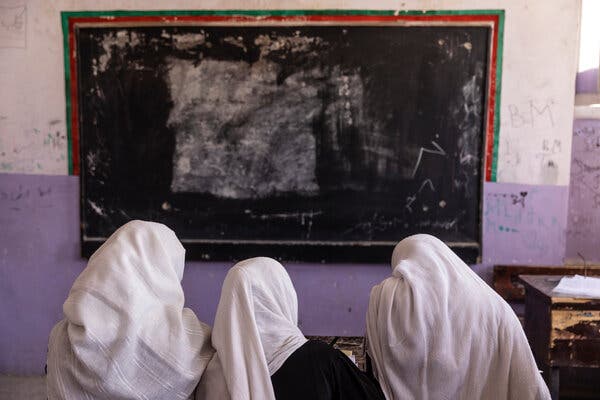In the recent past, we have asked ourselves why the Taliban are targeting women as enemies of Islam. This article outlines the Taliban’s decision, which turns the right to education for girls and women into a gamble. A powerful, radical wing of the Taliban has won an internal power struggle, and it’s clear they’re scared of knowledge. But is this really the case? The Taliban’s decision is more complicated than that, and we’d like to explore what drives this decision.
Taliban target women as enemies
The Taliban are preventing women from obtaining an education. This is one of the main reasons why women have been displaced and in hiding for months. Since the Taliban took control of the country last month, women have been targeted more than ever. Many high-profile women have disappeared and are currently hiding in secret after being targeted. The Taliban see women as their enemies and have a long list of restrictions and laws prohibiting their education.
Women in Afghanistan have expressed longing for more education and freedom. The Taliban, in their rule of Kabul, have made it mandatory for women to wear burqas and to have at least 20 fighters in a village. They have also ordered girls over 15 years old to remain home and not to socialize outside the house. Even the simplest of things, such as watching television or using mobile phones, are banned.
Taliban’s radical wing has prevailed in an internal power struggle
While both groups are equally loyal to their leaders, the Taliban’s radical wing has gained the upper hand in an internal power struggle. While the Haqqani Network, a group with close ties to Pakistan’s Inter-Services Intelligence, has declared itself a terrorist organization, Baradar’s group is softer on foreign policy and wants greater rapprochement with the international community.
Although Taliban supporters have compared their stance on jihadism to the Basmachi, Muslim guerrilla warriors who fought against the Bolsheviks in Central Asia, the latter’s ideological approach is quite different. Their goal is to free Afghanistan from the Western occupying powers, and they also advocate a regional order that respects the territorial integrity of neighboring states. Their approach to politics has also been emulated by other influential religious leaders.
The Taliban’s radical wing has been bolstered by foreign powers. Saudi Arabia and Pakistan backed Gulbuddin Hekmatyar, while Iran backed small Shi’a Hazara groups. In addition, bin Laden had a key role to play in promoting radical Sunni Islam among Afghan mujahidin. This gap has led many analysts to suggest that the Taliban has an even wider fan base than is currently recognised.
Taliban’s version of Islam is an archaic, internationally isolated bubble of religiosity
The Taliban’s version of Islam is an archetypal, internationally isolated bubble of religious repression. While claiming to be the religion of peace, the Taliban’s version of Islam is not consistent with other Muslims. In Indonesia and Bangladesh, for example, women are prime ministers, and women have the right to vote. In other Muslim countries, women fill high office in business, education, and even the judiciary.
Misogyny is a symptom of misogyny, and the Taliban’s version of Islam is a manifestation of this phobia. Because women are not allowed to practice their religion freely, this version of Islam systematically restricts their movement. Afghan Taliban leaders, meanwhile, deny women education and human rights and sex. These men are indoctrinated with irrational fears about women, and have been physically isolated from women since their childhood.
Taliban are scared of knowledge
The Taliban are afraid of knowledge, so they have been limiting women’s education for decades. The Taliban have also halted older girls’ education. But they have not yet enacted any substantive policy repercussions. This is despite their earlier pledge to let women go back to school. Despite these setbacks, young Afghan women are likely to continue to attend school. But the Taliban must first show compassion and inclusivity to women and students.
The Taliban are not alone in denying women education in Afghanistan. Some Muslim countries prioritize girls’ education. Countries like Kuwait and the United Arab Emirates have higher literacy rates than the U.S. and women in many Middle Eastern and North African nations are achieving STEM degrees at higher rates than their male counterparts. While world leaders may not have much clout to change the Taliban’s policy, they can still influence this by showing their support for women’s education and educating them.

